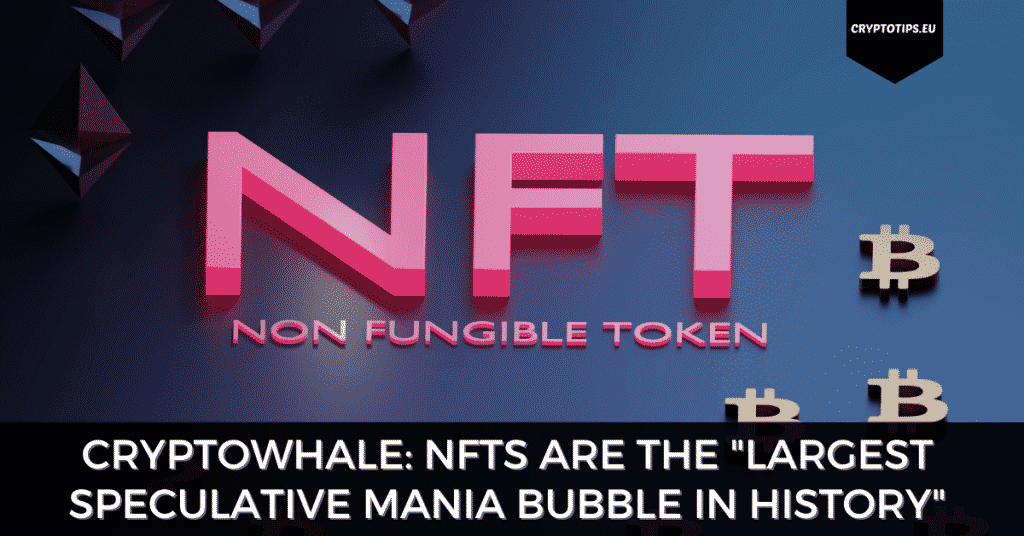CryptoWhale: NFTs Are The “Largest Speculative Mania Bubble in History”
Last Updated on 19 March 2021 by CryptoTips.eu
I like to read up on bubbles and manias I must admit. Any media piece from a respected magazine or journal (The FT, the WSJ, the Economist, the NYT, etc) that talks about 1929, the 2000 DotCom crisis, the South Sea, the Irish housing bubble of 2007, the Japanese housing bubble of the 1980s. Any piece with a title like that and I’m hooked. I can’t wait to read up about the hype and the panic afterwards.
In crypto, the thus far most notable bubble mania came in 2017 and was known as the initial coin offerings bubble. Celebrities and porn stars would back coins that no one had ever heard of before. These coins got pumped and subsequently also dumped or the development team would exit scam even before launching a token.
Bitcoin recovered and is by now hitting new heights but it left the cryptosphere as a whole with a foul taste.
Q: Who does the NFT market target?
— Kaꜩleen 🚂 (@breitwoman) March 18, 2021
A: People who have met all their material needs and still can’t fill that empty hole inside of them.
Back in the summer of 2020, we had a similar (albeit much smaller) DeFi bubble when everybody was hyping over terms like yield farming, flash loans and food coins (Kimchi and Hotdog coins come to mind). That one popped when the Sushi scandal burst.
No value whatsoever
This time round NFTs are facing a similar problem. Anyone can create them, even if they did not make the asset being tokenised.
here's a question. people keep tokenizing my tweets as NFTs. how does someone else monetizing my twitter feed help me in any way as a creator? genuinely perplexed.
— Meltem Demirors (@Melt_Dem) March 9, 2021
For example, even though the Beeple NFT (which sold for $69 million) was created by the artist himself (allowing the buyer to prove that he has the original). Anyone else could just create an NFT of exactly the same digital collage, or of someone else’s tweet, GIF or anything else on the internet.
Known crypto commentator Meltem Demirors made the same assessment a week ago.
Someone just sold this worthless NFT picture of a house for over $500,000.
— CryptoWhale (@CryptoWhale) March 17, 2021
The markets are dangerously overvalued and in the largest speculative mania bubble in history.
This won’t end well, and any rational investor knows this. Don’t get caught in temporary hype. pic.twitter.com/lib4xkGzzn
As such, the comment by Edmund Schuster, associate professor of corporate law at the London School of Economics, seems correct. He stated:
What we need to understand is that what is being traded is not the artwork, it’s the participation.
And why not? People can subjectively assign value to something, and that is not something that we can really argue against, even if NFTs have no objective value whatsoever.
Contrarian investor CryptoWhale, whose opinion we hold in esteem as much as any other (once you only turn bullish you are bound to make a mistake), put it even harsher this week when he said:
Someone just sold this worthless NFT picture of a house for over $500,000. The markets are dangerously overvalued and in the largest speculative mania bubble in history. This won’t end well, and any rational investor knows this. Don’t get caught in temporary hype.
The man doesn’t mince his words of course. Time will tell who’s right.
